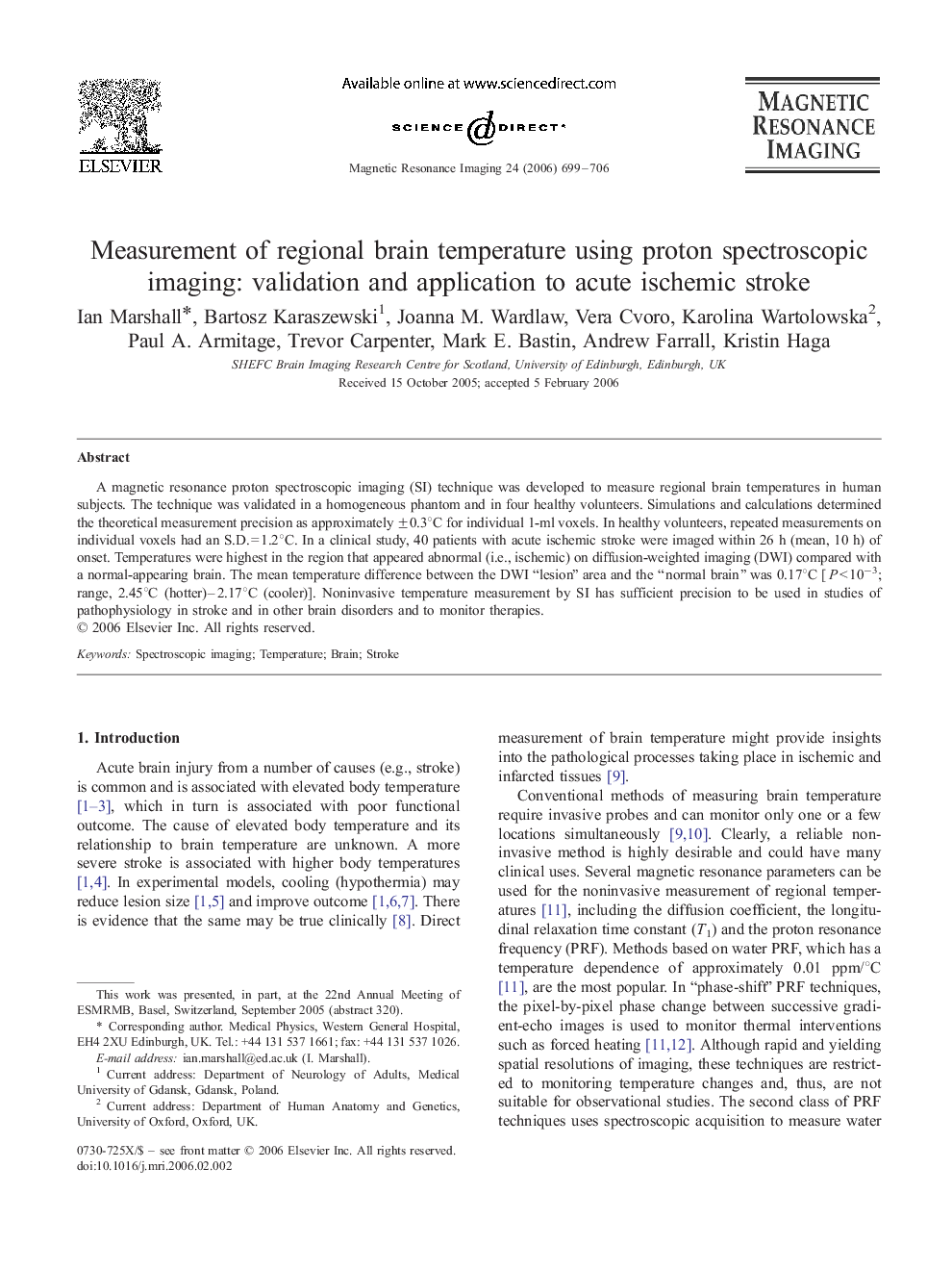| Article ID | Journal | Published Year | Pages | File Type |
|---|---|---|---|---|
| 1808066 | Magnetic Resonance Imaging | 2006 | 8 Pages |
A magnetic resonance proton spectroscopic imaging (SI) technique was developed to measure regional brain temperatures in human subjects. The technique was validated in a homogeneous phantom and in four healthy volunteers. Simulations and calculations determined the theoretical measurement precision as approximately ±0.3°C for individual 1-ml voxels. In healthy volunteers, repeated measurements on individual voxels had an S.D.=1.2°C. In a clinical study, 40 patients with acute ischemic stroke were imaged within 26 h (mean, 10 h) of onset. Temperatures were highest in the region that appeared abnormal (i.e., ischemic) on diffusion-weighted imaging (DWI) compared with a normal-appearing brain. The mean temperature difference between the DWI “lesion” area and the “normal brain” was 0.17°C [P<10−3; range, 2.45°C (hotter)–2.17°C (cooler)]. Noninvasive temperature measurement by SI has sufficient precision to be used in studies of pathophysiology in stroke and in other brain disorders and to monitor therapies.
